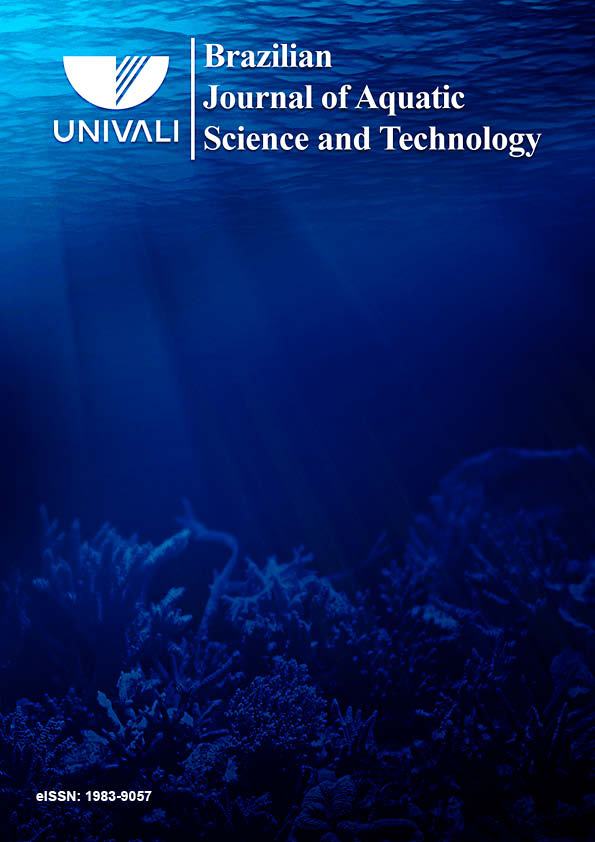Influência de vórtices na concentração de clorofila da confluência Brasil-Malvinas: Mecanismos inferidos por sensoriamento remoto
DOI:
https://doi.org/10.14210/bjast.v20n1.4782Abstract
This study aims to (a) identify the spatial patterns in the surface phytoplankton abundance, here indexed as satellite chlorophyll-a concentration ([chla]), associated with mesoscale eddies of the Brazil-Malvinas Confluence (BMC) and (b) infer which are the physical mechanisms responsible for such patterns. In this work, the 57 largest eddies in the broad BMC region were selected from a global eddy dataset based on merged satellite altimetry data. Using those eddies, the main mechanisms which may eddies affect the [chla] were tested: (a) the eddy-pumping, (b) the eddy Ekman pumping and (c) the eddy advection of meridional [chla] gradients. Mean spatial chlorophyll and chlorophyll patterns associated with the selected eddies, as well as correlations between variables that describe the [chla], and its spatial anomalies (Δ[chla]), distribution and the eddies’ physical characteristics, were calculated. Positive and negative anomalies associated with cyclonic and anticyclonic eddies’ interiors, respectively, and significant inverse correlations between eddies’ amplitudes and the difference between Δ[chla] inside and outside the eddies, were found as evidence of eddy-pumping mechanism. The [chla] spatial pattern associated to the eddy advection of meridional gradients was evident in the eastern side of the features, as low (high) [chla] being advected from south (north) in anticyclonic (cyclonic) eddies. The magnitude of the difference between Δ[chla] in the east and west eddies’ hemispheres presented itself more dependent on the [chla] meridional gradient intensity than on the eddy rotational velocity. Furthermore, the non-linear parameter of the studied eddies suggest that BCM eddies are capable to transport the water parcels trapped inside them, helping in the propagation of the eddy-pumping signature.
Downloads
Published
Issue
Section
License
Authors who publish with this journal agree to the following terms:
1. Authors retain copyright and grant the journal right of first publication with the work simultaneously licensed under a Creative Commons Attribution License that allows others to share the work with an acknowledgement of the work's authorship and initial publication in this journal.
2. Authors are able to enter into separate, additional contractual arrangements for the non-exclusive distribution of the journal's published version of the work (e.g., post it to an institutional repository or publish it in a book), with an acknowledgement of its initial publication in this journal.
3. Authors are permitted and encouraged to post their work online (e.g., in institutional repositories or on their website) prior to and during the submission process, as it can lead to productive exchanges, as well as earlier and greater citation of published work (See The Effect of Open Access).

